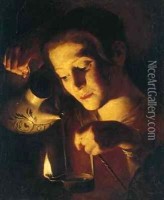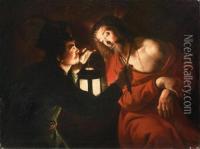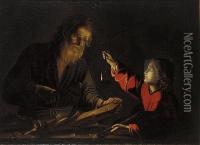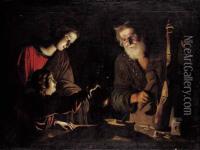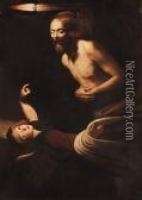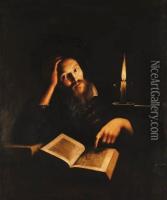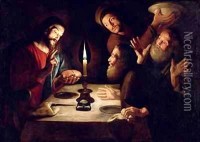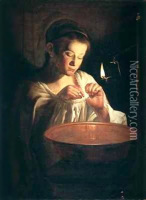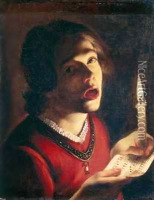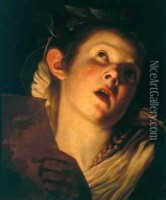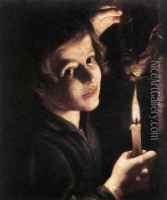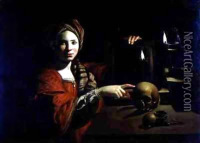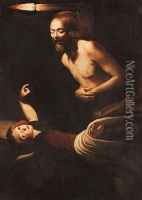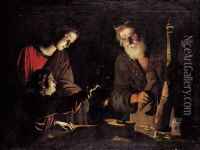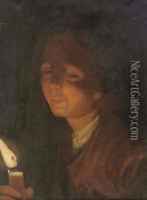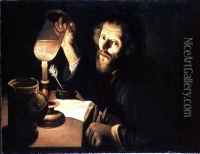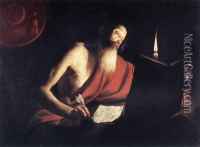Trophime Bigot Paintings
Trophime Bigot was a French Baroque painter whose career spanned the early 17th century. He was born around 1579 in Arles, which was then part of Provence. Not much is known about his early life and training, but it is believed that he may have been a pupil of the painter Jacques Bellange in the Lorraine region of France.
Bigot is often associated with the Caravaggisti, a group of artists who were influenced by the dramatic chiaroscuro and emotional intensity of the Italian painter Caravaggio. Although there is no concrete evidence that Bigot ever traveled to Italy, his works show a strong Caravaggesque influence, suggesting that he may have had direct exposure to Caravaggio's work or to other Caravaggisti in France or the Low Countries.
The majority of Bigot's career was spent in Italy, where he lived in Rome and later in Venice. He was particularly active in Rome from about 1620 to 1634, where he produced several works for churches and private patrons. Bigot's paintings are characterized by their use of dramatic lighting and shadow to create intense emotional effects. His subjects often include religious scenes, genre scenes, and still lifes, rendered with a remarkable attention to detail and texture.
One of Bigot's most famous works is 'The Denial of Saint Peter', which exemplifies his skilled use of light to convey the emotional turmoil of the scene. He also painted several versions of 'The Supper at Emmaus', where the play of light and shadow serves to focus the viewer's attention on the central figures of Christ and the disciples.
Bigot's later years were spent back in France, where he continued to paint until his death in 1650. His works were highly regarded in his time, and he was known for his ability to create a sense of immediacy and realism in his depictions. Today, Trophime Bigot is recognized as an important figure in the development of the Baroque style in French and Italian painting. Despite the fact that his life and work were somewhat overshadowed by other Caravaggisti, modern scholarship has begun to appreciate the unique qualities of his art and his contribution to the Baroque movement.
